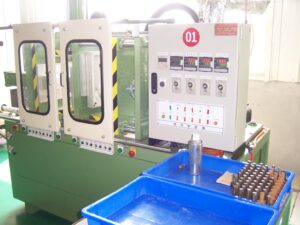
Based on the latest developments up to early June 2025, the outlook for U.S.-China tariffs involves both significant de-escalation and lingering structural challenges. Here’s a synthesis of key trends and projections:
1. Recent Tariff Reductions: From 145% to 30%
Immediate Rollback: Following the May 12 Geneva talks, the U.S. suspended 24% of tariffs for 90 days and canceled 91% of retaliatory tariffs imposed in April 2025, reducing the effective rate on most Chinese goods from a peak of 145% to ~30%. China reciprocally cut its retaliatory tariffs.
Retained Tariffs: A 10% baseline tariff remains in place for both sides, pending further negotiations.
2. Phased Elimination Plan (2025–2026)
A follow-up agreement in New York (May 14) outlined a three-stage tariff-removal roadmap:
Phase 1 (July 1, 2025): Cancel 65% of remaining tariffs, covering consumer goods, agriculture, and industrial inputs. Example: U.S. tariffs on Chinese furniture drop from 24% to 12%; Chinese tariffs on U.S. soybeans fall from 18% to 9%.
Phase 2 (Dec 31, 2025): Eliminate 30% of tariffs, retaining a 5% “safety buffer” for strategic sectors (e.g., EVs, critical minerals).
Phase 3 (Jun 30, 2026): Fully remove residual tariffs if cooperation progresses, alongside a “trigger-consultation” mechanism to prevent unilateral hikes.
3. Tech Trade “Thaw” in Sensitive Sectors
Semiconductors: The U.S. agreed to ease restrictions on exports of sub-14nm chipmaking equipment to China, contingent on “non-military use” pledges. China will allow U.S. firms to join its third-gen semiconductor R&D alliance.
Clean Energy: Joint labs for PV recycling tech will be established, with quotas lifted on wind equipment and batteries.
Contested Areas: “Safety guardrails” were set for EVs (e.g., data localization reviews) and AI (joint export controls to prevent dual-use risks).
4. Persistent Challenges and Risks
90-Day Suspension Uncertainty: The paused 24% tariffs could be reinstated if talks stall, creating volatility.
Structural Frictions: Subsidies (e.g., U.S. CHIPS Act, Chinese EV support) and tech standards remain unresolved. The first “Industrial Policy Dialogue” is scheduled for Sept 2025 in Tianjin to address these.
Geopolitical Pressures: Analysts warn the U.S. may shift to non-tariff tactics (e.g., tech embargoes) if strategic competition intensifies.
5. Economic Impact and Corporate Responses
Growth Boost: Phase 1 cuts could reduce trade costs by 12%, saving U.S. households $300B/year and lifting Chinese exporters’ profits by 2.3%.
Supply Chain Shifts: Despite tariff relief, companies continue diversifying production to Southeast Asia/Mexico. Example: 89% of U.S. firms prioritized shifting orders from China to low-tariff regions in early 2025.
Global Repercussions: Unresolved tariffs could lower 2025–2026 global growth to 2.8–3.0% (vs. IMF’s 3.3% baseline), costing the world economy ~$1.7T.
In Summary
The tariff trajectory is cautiously optimistic, with a structured pathway toward normalization by mid-2026. However, the 90-day suspension window and deep-rooted disputes over technology and subsidies imply high fragility. Businesses should prepare for both opportunities (e.g., near-term export rebounds) and contingencies (e.g., supply chain diversification).





